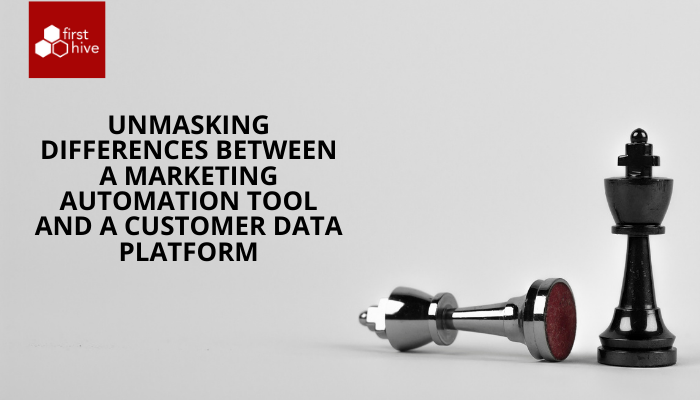5 reasons you need a Single Customer View
May 17, 2021The past year has been a time of worldwide transformation, with businesses facing the stark choice of going under or adapting their ways to meet their customers’ requirements. For example, banks have integrated their services online so they can assign risk profiles and monitor changes in real-time, while major retail brands have launched direct-to-consumer (DTC) operations or planned to implement click and collect this year. One thing successful brands have in common is a comprehensive understanding of who their customers are and what they need. The best way to obtain this is to build a Single Customer View (SCV), unifying everything you know about a customer. Here are some indications that you might benefit from one.
- You’re using manual processes to cover weaknesses in your tech stack
If you have two marketing channels and 1,000 customers, someone with reasonable analytical skills will be able to collect all the necessary data in a spreadsheet and match the records of a single individual, using pattern recognition and formulas. However, that’s not the reality for most businesses. Instead, within most brands an ever-increasing number of channels and campaigns are generating marketing data, making it harder to unify all of it into one clean, reliable record.
At some point, the process will become unwieldy and beyond the skills of the regular business user or marketer, at which point it might be time to think about automating the unification process. This task often becomes the responsibility of the IT department, leading to a latency issue for the marketing department, which becomes wholly reliant on others to access the data needed to get campaigns out of the door.
Matching, merging, and deduplicating your data effectively is a crucial part of creating a Single Customer View since unreliable data with poor hygiene will lead to inaccurate matches and a false view of your customer. Cleansing data to enhance it is an involved process, but once Marketing has access to high quality data in one place, the end-to-end process of accessing, analyzing, segmenting, and activating that data into campaigns can be reduced from weeks to a matter of hours or minutes.
When businesses do not have an SCV, manual processes come into play to extract, transform and load data between systems to create accurate campaign audiences, placing an ongoing burden on certain people or departments. Instead of applying ‘sticky plasters’ to the existing CRM technology stack, businesses should look to a Customer Data Platform (CDP) to remove those manual processes.
- Marketing does not know who their customer is or what they’re doing
Customer data can’t inform your strategy unless you are able to interpret it, and with information spread across many systems, such as a CRM, an eCommerce platform, and an email platform, it can be an uphill struggle for marketers to truly understand the customer. Typically, they’re not data scientists! It may seem easier to hand the job over to IT or an external provider, who can help to make sense of the information and extract insights into customer habits, behaviors, and interests, but as we know from point 1; this takes too long.
The problem is, the IT team will have other departments to focus on too, so there’ll be no chance to post quick follow-up questions if needed, nor will it be possible to pivot or update campaigns in real-time.
Once the data is sorted into a Single Customer View, however, getting a sense of patterns and trends, the entire customer journey becomes much easier. A marketer will be able to spot links within the data, formulate associated questions, and if they have access to the SCV, for example through the User Interface of a Customer Data Platform, they can be empowered to better understand the data as part of their campaign analysis.
- You’re at risk of governance and compliance issues
When the GDPR came out in 2018, its data protection rules became some of the strictest in the world. In fact, Weatherspoon’s, a large and well-known UK pub chain, deleted its entire email marketing database of over 650,000 contacts, deciding this was preferable to running the risk of being fined for a data breach or emailing customers to verify consent, something airline Flybe got into trouble for. The chain cut its losses and moved all news and offers onto its social channels instead.
Deleting a whole database is extreme, but with harsh new data protection laws in Oklahoma, Virginia, New York, and Washington being passed in the wake of the CCPA, and parts of the Middle East following suit, it’s never been so important to protect your customers’ Personally Identifiable Information (PII).
A Single Customer View can help promote compliance, first by centralizing and ranking the different contact permissions people may have given – for example, saying via email that they’re happy to be contacted by SMS, but later via text that they’d rather not be. Second, a persistent, unified customer profile will keep track of all data amassed, along with any processing, making subject access requests (SARs) and data erasures much easier in the event of a breach or application.
- There are competing insights across your business
A business will have over-arching goals, but varied departmental goals mean different systems may be used to store customer data. The Customer Service Team might use a contact management solution, the Marketing Team might use an email marketing tool, or marketing cloud, to track campaigns, and the wider business might make good use of an Enterprise Resource Planning (ERP) system. Each can hold a different view of customer information, and each team may rely heavily on its favored analytics.
In order to get one customer view that everyone can leverage to get consistent answers, a company needs unifying technology, such as a Data Warehouse or CDP, or plan, such as a Master Data Management strategy. A set policy for how data is managed will ensure that everyone is seeing the same information, stored in the same format, thus avoiding any potential confusion.
Forming a company-wide consensus is easier said than done. Our Omnichannel Marketing Excellence report found just 17% of companies have C-suite sponsorship and a dedicated Customer Experience (CX) team to ensure a seamless CX, despite 39% of CEOs rating a great customer experience as the most effective differentiator. With sponsorship and creation of a Single Customer View, the customer experience will be more engaging and consistent.
- You’re worried about inefficiencies in your marketing budget spend
Having a single, reliable record for each customer will help marketers to weed out inefficiencies in the marketing strategy. For example, if five customer addresses are cleansed and the latest address prioritized, there’s less chance of sending a catalog to the wrong house.
Similarly, if it is known at which point of the customer journey most customers are likely to convert or churn, or where they are most likely to come from or go on to, marketers will be empowered to spend money on the right stages of the customer journey. They’ll be able to advertise on popular channels and with influential outlets, optimize key journey points, and fix the weaker ones to improve customer retention.
Getting a clearer picture of the customer will also enable segmentation according to interest, behavior, or characteristics, leading to focused targeting of key groups with appropriate messaging. Accurate targeting will mean more conversions, and a higher conversion rate will mean less spend is required on advertising platforms to achieve the same return.
Conclusion
A Single Customer View database isn’t just a contributing element of your marketing strategy, it should sit at the heart of it, helping you to gain a clear picture of your customers and interpret what that picture means. If it’s held within a CDP, that SCV can then be shared with your outgoing channels to help you create and send appropriate, effective marketing messages, to the right platforms, at the right point in your marketing campaign. In other words, an SCV is a one-stop-shop for gathering and activating the customer insights needed to offer personalization, something that CDP users are three times as likely to offer, and a seamless customer experience, which they are twice as likely to offer.
If you want to learn more about whether a CDP is the right Single Customer View solution for you, read our eBook, “To CDP or Not to CDP”, to learn 5 ways to unify your customer data.


